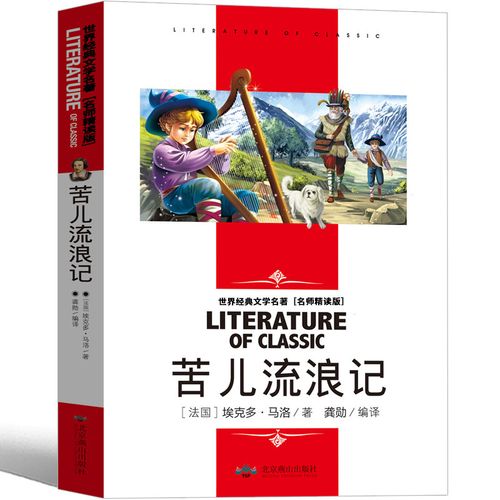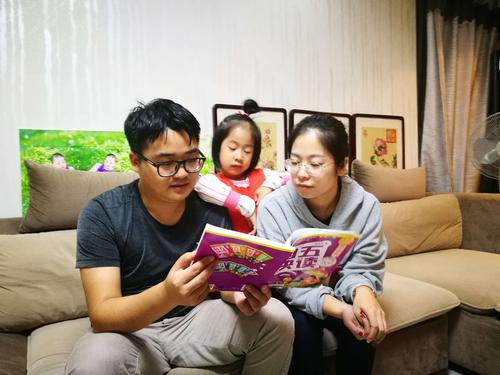回想,回顾的英文回顾翻译回顾英语怎么说-qq网名英文
2023年4月4日发(作者:omgyes)
动词第三人称单数变化规则
1)一般情况下,动词后面直接加—s。例如:worksgetssaysreads
2)以ch,sh,s,x或o结尾的动词,在后面加-es。
例如:go—goesteach—,teachewash-washesbrush-brushes
catch-catchesdo-doesfix-fixes
3)以辅音字母+y结尾的动词,把y变为i再加—es。例如:
study—studiestry—triescarry—carriesfly—fliescry-cries
现在分词变化规则
1.直接+ing(例:sleep+ingsleeping)
2.去e+ing(例:bite-e+ingbiting)
3重读闭音节,且末尾只有1个辅音字母,双写辅音字母+ing(例:sit+t+ing
sitting)
4。特殊变化:die—dying,lie—lying,tie-tying
5。不规则变化
现在进行时的基本用法:
A表示现在(指说话人说话时)正在发生的事情。
例:Wearewaitingforyou.
B。习惯进行:表示长期的或重复性的动作,说话时动作未必正在进行。
例:Mr。Greeniswritinganothernovel.
(说话时并未在写,只处于写作的状态.)
例:。
C。已经确定或安排好的将来活动
I’mleavingforatrekinNepalnextweek。(已经安排了)
we’reflyingtoParistomorrow.(票已经拿到了)
D.有些动词(状态动词不用于进行时态)
1。表示知道或了解的动词:believe,doubt,forget,imagine,know,
remember,realize,suppose,understand
2.表示“看起来\"“看上去”appear,resemble,seem
3表示喜爱或不喜爱hate,。prefer
4表示构成或来源的动词becomefrom。contain,include
5表示感官的动词hearseesmellsoundtaste
6表示拥有的动词。s。wantwish
1、现在进行时的构成
现在进行时由\"be+v—ing”构成.be应为助动词,最容易被同学漏掉,它应与
主语的人称和数保持一致。
2、现在进行时的应用
(1)当句子中有now时,常表示动作正在进行,这时要用现在进行时。如:They
areplayingbasketballnow.现在他们正在打篮球.
(2)以look,listen开头的句子,提示我们动作正进行,这时要用现在进行时。
如:
Listen!SheissinginganEnglishsong。听,她正在唱英语歌。
(3)表示当前一段时间或现阶段正在进行的动作,且此时有thisweek,these
days等时间词,这时常用现在进行时.如:
Wearemakingmodelplanesthesedays。这些天我们在做飞机模型。
(4)描述图片中的人物的动作,也为了表达更生动.此时也常用现在进行时。如:
Lookatthepicture。Thechildrenareflyingkitesinthepark。看这幅图,那些
孩子正在公园放风筝。
3、现在分词的变化规则:
(1)一般情况下,直接在动词后加-ing
work—---workingsleep—-—--sleepingstudy--——-studying
(2)动词以不发音的-e结尾,要去-e加-ing
take—--——takingmake—-———makingdance-——-—dancing(3)重读
闭音节的动词,要双写词尾字母,再加-ing
cut—----cuttingput-——--puttingbegin-—-—--beginning
(4)以-ie结尾的动词,把变成y再加-ing
lie----—lyingtie—-——-tyingdie-—--—dying
4、现在进行时的变化
肯定句式:主语+be(am,is,are)+现在分词+其它.
否定句式:主语+be(am,is,are)+not+现在分词+其它.
一般疑问句:be(am,is,are)+主语+现在分词+其它
特殊疑问句:疑问词+be(am,is,are)+主语+现在分词+其它
形容词的比较级和最高级变化形式规则如下
构成法原级比较级最高级
①一般单音节词末尾er和eststrongstrongerstrongest
②单音节词如果以e结尾,只加r和ststrangestrangerstrangest
③闭音节单音节词如末尾只有一个辅音字母,
须先双写这个辅音字母,再加er和est
sad
big
hot
sadder
bigger
hotter
saddest
biggest
hottest
④少数以y,er(或ure),ow,ble结尾的双音节词,末尾
加er和est(以y结尾的词,如y前是辅音字母,把y变
成i,再加er和est,以e结尾的词仍加r和st)
angry
clever
narrow
noble
angrier
cleverer
narrower
nobler
angrest
cleverest
narrowest
noblest
⑤其他双音节和多音节词都在前面加单词more和mostdifferent
more
different
most
different
1.在英语中,在表示“比较…”和“最…\"时,形容词要用特别的形式,称
为“比较级”和“最高级\",原来的形容词称为“原级”:
原级比较级最高级
strong强stronger较强strongest最强
2。形容词的比较级和最高级的构成方法如下:
a.单音节词和少数双音节词以加-er和—est的方式构成:
原级比较级最高级
young年轻younger较年过松源晨炊漆公店其五原文 轻youngest最年轻
old老older较老oldest最老
clean干净cleaner较干净cleanest最干净
在加词尾时要注意下面的各种情况:
情况加词尾法冰心的诗歌及赏析简短 例词
一般情况直接加词尾small,smaller,mallest
以e结尾的词加-r,—stlarge古诗词李白的诗 ,larger,largest
以辅音+y结尾的词变y为i,再加词尾busy,busier,busiest
以“辅音字母”结尾的词将这字母双写再加词尾big,bigger,biggest
b。其他词都在前面加more,most构成比较级及最高级:
原级比较级最高级
importantmoreimportantmostimportant
difficultmoredifficultmostdifficult
interestingmoreinterestingmostinteresting
usefulmoreusefulmostuseful
3.用比较级时常用than引起一个从句,表示和什么比较:
Hisroomisbiggerthanmine。他的房间比我的房间大。
Sheisyoungerthanmysister。她比我妹妹年轻.
Exercises:
I.学会下列形容词的比较级和最高级:
原级比较级最高级
talltallertallest
strongstrongerstrongest
oldolderoldest
largelargerlargest
finefinerfinest
latelaterlatest
bigbiggerbiggest
hothotterhottest
thinthinnerthinnest
easyeasiereasiest
busybusierbusiest
happyhappierhappiest
valuablemorevaluablemostvaluable
dangerousmoredangerousmostdangerous
comfortablemorecomfortablemostcomfortable
1.有几个形容词有特殊的比较级和最高级形式:
原级比较级最高级
Goodwellbetterbest
Badillworseworst
manymuchmoremost
littlelessleast
farfartherfurtherfarthestfurthest
oldolderelderoldesteldest
小贴士1:elder和eldest可用来表示兄弟和子女的长幼顺序:
myeldersister我的姐姐
myeldestbrother我的大哥
theireldestson他们的长子
小贴士2:further表示“较远”外,还可表示“进一步的”;而farther仅表示
距离:
Thefartherplantsaretoocold.更远的行星太冷.
Doyouneedanyfurtherhelp?你还需要更进一步的帮助吗?
2。双音节词除了以“辅音+y\"结尾的词外,还有以ow,er,le结尾的词,
和个别其他双音节词,可以用加词尾的办法构成比较级和最高级:
原级比较级最高级
narrownarr小学二年级上册古诗必背诵 owernarrowest
clevercleverercleverest
simplesimplersimplest
commoncommonercommonest
3.也有少数单音节词可以加more和most的办法构成比较级和最高级:
原级比较级最高级
pleasedmorepleasedmostpleased
tiredmoretiredmosttired
gladmoregladmostglad
名词的复数形式
构成方法读音例词
在词尾加-s1。在清辅
音后读作
[s]2.在
浊辅音后
读作
[z]
—desks[s]2。map—maps[s]3。field–filelds
[dz]dog-dogs[z]sea—seas[z]
1.以s、x、
sh、ch结尾
的名词后加
—es2。如
词尾是e,只
加—s
—(e)s
读作
[iz]
lasses[iz]box—boxes[iz]dish-dishes
[iz]watch—watches[iz]2。horse—horses[iz]
如词尾为–f
或–fe,则
一般变为
–ves
—ves读
作[vz]
-leaves[vz]2。knife-knives[vz]
以辅音+y结
尾的名词,
变y为i再
加-es
-ies读作
[iz]
family-families[iz]
以元音+y结
尾的名词,
加-s
—s读作
[z]
boy-boys[z]
以辅音+o结
尾的名词,
加—es
-es读作
[z]
hero—heroes[z]potato—potatoes[z]tomato—tomatoes[z]
以元音+o结
尾的名词,
加-s
—s读作
[z]
radio-radios[z]zoo-zoos[z]
以-th结尾的
名词,加—s
1。在长元
音后,
—ths读
作
1。bath—baths[z]—months[s]
[z]
2.在短元
音或辅音
后,—ths
读作[s]
英语里有一些名词的复数形式不是以词尾-s或-es构成,
构成方法例词
变内部元
音
foot[u]—feet[i:]man[]—men[e]mouse[au]—mice[ai]woman[]—women[e]
词尾加-enox-ox唐诗古朗月行唐李白 en(公牛)child[ai]—children[i]
形式不变
(通形名
词—---单、
复数同形)
deer—deerfish—fishsheep—sheep
集合名词
(只有复
数,没有单
数。)
trouserspeople(人,人民)glasses(眼镜)
名词做定
语1.只
在后面名
词加复数
,
woman随
之后面的
名词而变
化,后单其
单,后复其
复。
作定语永
远用作复
数。
ree—appletrees2。mandoctor—shopsportsshoes
表示国籍Chinese—ChineseJapanese—JapaneseEnglishman—EnglishmenFrenchman—FrenchmenAmerican-Ame
的名词(中
日不变,英
法变,其余
词后加s)
其它名词复数的规则变化
1)以y结尾的专有名词,或元音字母+y结尾的名词变复数时,直接加s变复数:如:
twoMarystheHenrysmonkey—--monkeysholiday—-—holidays
比较:层楼:storey—-—storeysstory——-stories
2)以o结尾的名词,变复数时:a.加s,
如:photo--—photospiano-——pianosradio--—radioszoo--—zoos;
b.加es,如:potato--potatoestomato-—tomatoes
c。均可,如:zero-—-zeros/zeroes
3)以f或fe结尾的名词变复数时:
a。加s,如:belief———beliefsroof——-roofssafe—-—safesgulf—-—gulfs;
b.去f,fe加ves,如:half---halvesknife-—-knivesleaf—-—leaveswolf——-wolves
wife——-wiveslife—--livesthief———thieves;
c.均可,如:handkerchief:
handkerchiefs/handkerchieves
名词复数的不规则变化
1)child———childrenfoot--—feettooth---teeth
mouse——-miceman--—menwoman———women
注意:与man和woman构成的合成词,其复数形式也是-men和—women。
如:anEnglishman,twoEnglishmen。但German不是合成词,故复数形式为
Germans;Bowman是姓,其复数是theBowmans.
2)单复同形如:
deer,sheep,fish,Chinese,Japanese
li,jin,yuan,twoli,threemu,fourjin
但除人民币元、角、分外,美元、英镑、法郎等都有复数形式。如:
adollar,twodollars;ameter,twometers
3)集体名词,以单数形式出现,但实为复数.
如peoplepolicecattle等本身就是复数,不能说apeople,apolice,acattle,但
可以说ape针的组词 rson,apoliceman,aheadofcattle,theEnglish,theBritish,theFrench,
theChinese,theJapanese,theSwiss等名词,表示国民总称时,作复数用.
如:TheChineseareindustriesandbrave.中国人民是勤劳勇敢的。
4)以s结尾,仍为单数的名词,如:
,politics,physics等学科名词,为不可数名词,是单数.
是不可数名词。
tedStates,theUnitedNations应视为单数。
TheUnitedNationswasorganizedin1945。联合国是1945年组建起来的。
d。以复数形式出现的书名,剧名,报纸,杂志名,也可视为单数。
\"TheArabianNights\"isaveryinterestingstory-book。
《一千零一夜》是一本月华 非常有趣的故事书。
5)表示由两部分构成的东西,如:glasses(眼镜)trousers,clothes
若表达具体数目,要借助数量词pair(对,双);suit(套);apairofglasses;two七夕节的古诗四句 pairs
oftrousers
6)另外还有一些名词,其复数形式有时可表示特别意思
如:goods货物,waters水域,fishes(各种)鱼
动词变名词
1.在词尾加er,r,双写加er或or:
_player,sing_singer,wait_waiter,find_finder,thrill_thriller
B。write_writer,drive_driver,come_comer,explore_explorerdance_
dancer
C。run_runner,win_winner,rob_robber,traval_travaller
D。visit_visitor,invent_inventor
2。在词尾加ing:
build_building,draw_drawing,end_ending,begin_beginning,
swim_swimming,skate_skating,feel_feeling,say_saying,
mean_meaning,cross_crossing,surf_surfing,paint_painting
3.在词尾加ion或去e加ion:
A。decide_decision,describe_description,produce_production,
celebrate_celebration,pronounce_pronunciation,decorate_
decoration
graduate_graduation,frustrate—frustration,pollute_pollution
contribute_contribution,congratulate_congratulation,
educate_education,organize_orgnization,donate_donation,
appreciate_appreciation,operate_operation,invite_invitation
s_discussion,invent_invention,attract_attraction
impress_impression,inject_injection,instruct_instruction
4。其它:
know_knowledge,please_pleasure,enjoy_enjoyment,
practise_practice,die_death,succeed_success,weigh_weight,
sit_deat,change_chance,enter_entrance,fly_flight,
rob_robbery,discover_discovery,faile_failure,appear_appearance,
breathe_breath
更多推荐
tries是什么意思es在线翻译读音例句








发布评论